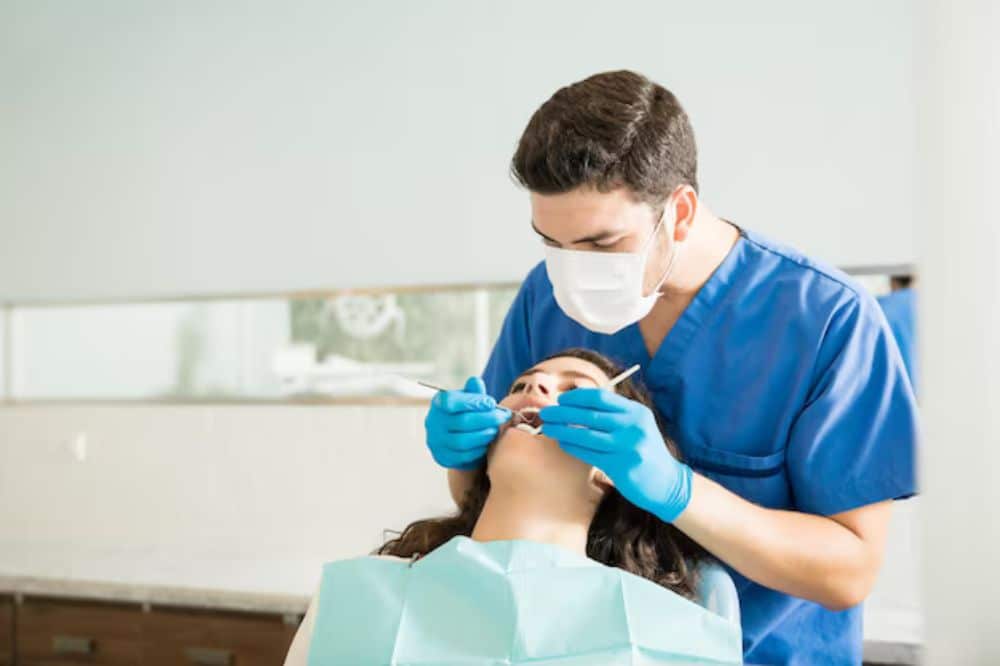A straight and confident smile can have a significant impact on your self-esteem and oral health. For many teens and young adults, traditional metal braces may not be the most appealing option. Invisalign offers a modern, nearly invisible way to straighten teeth without the discomfort and appearance of traditional braces.
But is Invisalign the right choice for you? This guide will help you understand how it works, its benefits, and whether it is the best option for your needs.
What is Invisalign?
Invisalign is a type of orthodontic treatment that uses clear, removable aligners to gradually shift teeth into their desired position. Unlike traditional braces, which rely on metal brackets and wires, Invisalign aligners are made from a smooth, clear plastic material that is custom-designed for each patient.
These aligners are nearly invisible when worn, making them a popular choice for those who want to straighten their teeth discreetly.
How Does Invisalign Work?
The Invisalign process involves a series of steps that are designed to gradually shift your teeth into place.
1. Consultation and Treatment Plan
Your journey begins with a consultation with a dentist or orthodontist who specializes in Invisalign. During this visit, they will assess your teeth and determine whether Invisalign is a suitable option for your case. Digital scans or impressions of your teeth are taken to create a customized treatment plan.
2. Custom-Made Aligners
Based on your treatment plan, a series of clear aligners is created specifically for you. Each aligner is designed to make slight adjustments to the positioning of your teeth over time.
3. Wearing the Aligners
Patients are required to wear their aligners for about 20 to 22 hours per day. The aligners should only be removed for eating, drinking anything other than water, brushing, and flossing.
4. Switching to New Aligners
Every one to two weeks, you will switch to a new set of aligners. Each new aligner gradually shifts your teeth closer to the desired alignment.
5. Completing the Treatment
Most Invisalign treatments take between six months and two years, depending on the complexity of the case. Once the teeth have moved into their final position, a retainer may be recommended to help maintain the results.
Who is Invisalign Best For?
Teens
Invisalign is a great option for teenagers who want a more discreet alternative to traditional braces. Many teens feel self-conscious about metal braces, and Invisalign provides a nearly invisible solution. However, teens must be responsible enough to wear their aligners as instructed for the treatment to be effective.
Young Adults
College students, professionals, and those who are socially active often prefer Invisalign because it allows them to straighten their teeth without drawing attention. The ability to remove aligners during important events, such as job interviews or presentations, makes Invisalign a convenient choice.
Not the Best Option If…
Invisalign is not suitable for everyone. If you have severe bite issues, large gaps, or significant misalignment, traditional braces or other orthodontic treatments may be necessary. Additionally, if you struggle with wearing aligners consistently, the treatment may not be as effective.
Advantages and Disadvantages of Invisalign
Advantages
- The clear aligners are nearly invisible, making them a discreet option for straightening teeth.
- More comfortable than traditional metal braces since there are no wires or brackets to cause irritation.
- Aligners can be removed, allowing you to eat and drink without restrictions.
- Easier to brush and floss compared to traditional braces.
- Fewer visits to the dentist, as adjustments are not required like with traditional braces.
Disadvantages
- Requires discipline to wear aligners for the recommended number of hours per day.
- Some people experience mild discomfort when switching to a new aligner.
- Aligners can be lost or damaged if not handled properly.
- Not suitable for severe orthodontic cases that require extensive realignment.
How Long Does Invisalign Treatment Take?
The length of Invisalign treatment varies depending on the complexity of the case. On average, most people complete their treatment within six to eighteen months. Those with minor alignment issues may complete their treatment sooner, while more complex cases may take longer.
One of the key factors in achieving the best results is wearing the aligners consistently and following the dentist’s recommendations.
Caring for Your Invisalign Aligners
- Clean your aligners daily using a mild soap and lukewarm water. Avoid using hot water, as it can warp the plastic.
- Always remove your aligners before eating to prevent staining and damage.
- Store your aligners in their case when not in use to avoid losing or damaging them.
- Brush and floss your teeth before putting the aligners back in to maintain good oral hygiene.
Get Invisalign in Vancouver at Aria Dental Studio
If you are considering Invisalign in Vancouver, Aria Dental Studio offers personalized Invisalign treatment to help you achieve a straighter smile.
Our experienced dentists in Downtown Vancouver will assess your teeth and create a customized plan to suit your needs.



